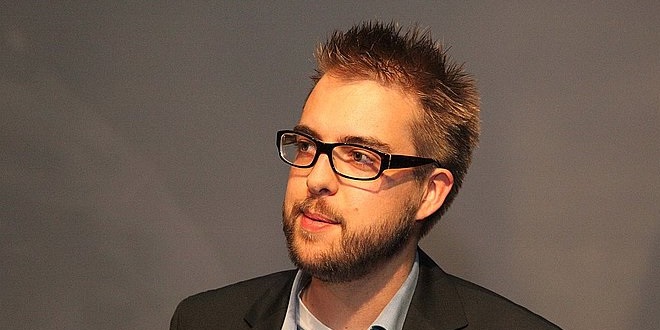by tomnora | Aug 27, 2014 | startup CEO
I’m a bit tired of these Top 5, Top 10 etc. lists, just used as click bait. But…
I am doing this anyway for a new site, so I thought I’d ask the community what you think. Here are mine, pretty much in order:
- Short and Sweet – no scrolling, hovering required. Less Is More.
- One click to the lower area – I do this on tomnora.com to reveal a “matrix” mesmerizing animation.
- Pretty URLs – not just readable, but actually nice looking. Add some important keywords but not many.
- Repeat the key Message/Headline – from your email that sent them here. Make it read like a headline.
- No Video on First Visit – Don’t force them to make this choice. Instead, …
- A Beautiful Jumbo Image – One, not 2 or 3. Something awesome.
- Call To Action/Sign Up Form – Entice them to sign up for your …?? try something better than a newsletter.
- Visible Contact Info – Make your email and city (yes, city) very visible. Don’t make them click around for this.
I will post the final page once it’s finished. If you have a better list or changes to this one, please let me know. And/or, if you have a landing page you can share please do.
@tomnora

by tomnora | Aug 26, 2014 | Angel Investor, Drupal, founder, PHP, Revenue Growth, SaaS, Scalability, startup, startup CEO, venture
As further market proof of the power of Drupal in the enterprise, Acquia has received about $100 million in funding in the past 3 months, which puts its valuation at over $1 billion.
http://j.mp/nora-acquia
There’s a lot of buzz about the Amazon acquisition of TWITCH this week. As a personal friend of the original investor, I’m very happy for this transaction – after 7 years of work, repositioning, and sticking to it their vision has paid off. But that’s a different article…
Less prominent in the news, but possibly more important, is Amazon’s investment in ACQUIA. Acquia, Inc. is the for-profit company founded by Dries Buytaert, the inventor of Drupal, to support his open source project. Drupal was launched in 2001, and Acquia started in 2007. When Open Source software projects are launched, the progenitors often start a for-profit sister company to garner some income from training, support and consulting. Because they are open source. the original products can’t generate revenue, so when these OS projects occassionally blow up into phenomenons like Drupal and WordPress have over the past few years, it’s gratifying but also quite frustrating to watch others derive so much value from your baby while you toil away to lead its growth with no financial return. Plus, there are tons of expenses like servers, bandwidth, office space, travel and the time of many professionals.
Red Hat was one of the first of these types of companies bridging open source with big finance, leveraging Linux support into a profitable business, also leveraging the enterprise. They kind of invented this business model. Sun Microsystems and others almost made it happen, but they were only semi-free. Google has optimized this open source to freemium model in almost all of its products.
But Drupal has succeeded way beyond it’s original expectations. It was originally started as a college dorm project, where many of the best products on the web seem to hatch. It gained recognition during the 2004 presidential campaign when Howard Dean’s IT director decided to use it as a platform for community and campaigning. After that it quickly gained credibility and spread throughout government, and corporate America.
Drupal is now driving some of the largest and most critical websites in the world, including The White House, The Oscars, Twitter, Mercedes Benz, Warner Music Group, The Louvre Museum, The City of Los Angeles and Stanford University. Over its 13 year life the web has vastly changed from primarily static pages to dynamic database driven automated (“rendered”) web page serving, which Drupal excels at. The average website size has also greatly increased, aided by automated rendering systems like Drupal and others. The term Content Management System has become mainstream in everything from the Fortune 500 to small businesses.
Some of Drupal’s success has come from luck, but most of it has been because of strategy and excellent timing. Dries has carefully pushed the technology not to the bleeding edge, but towards the modern edge where enterprises are comfortable. He and his team have avoided many temptations to try new fads, make big changes and try to grow faster. Currently they face enormous pressure to innovate faster, and are responding with Drupal 8, which will incorporate many new modern web architectures previously not part of the Drupal platform.
Acquia has been critical in supporting, guiding, enhancing and positioning Drupal for the past 7 years. It was a startup that launched with funding from day one and has never looked back.
Amazon’s motivation in buying into Acquia is a bit more self serving. Acuia provides premium, high security, supported hosting to it’s customers, which all runs on top of Amazon AWS. Amazon can see that some of AWS most robust and challenging work comes from Acquia with Drupal. For example, Acquia runs its Drupal infrastructure on more than 8,000 AWS instances and serves more than 27 billion hits a month (or 333TB of bandwidth). Amazon has a strategic value beyond many other companies or VCs in their investment.
What will come next? Will Amazon try to acquire all of Acquia before the inevitable IPO? I think we can bet on that.
This is a very contemplative time for Buytaert – he has fierily protected Drupal’s independence and strategic positioning, taking risks but protecting his large customers from drama, can he keep Amazon and Bezos at bay? I have no doubt he will, for he is a true “Startup CEO”, even though his title is CTO at Acquia.
@tomnora
more info on the funding round from @thewhir http://j.mp/nora-acquia

by tomnora | Aug 18, 2014 | startup CEO
Typically yes, but it depends on a few things. Getting VC funding isn’t as hard as it used to be, and often companies get $25K from Google Ventures and make it sound like a real round.
So…
1) Amount of Funding. If it’s less than ~$250K it’s kind of like they didn’t get funding.
2) Equity Offer. Depending on the terms and amount (% of company, not # of shares), this has a major impact on cash. Below market salary ifs fine if you can afford it and if the equity is awesome.
Remember, over 99% of startups fail, so the equity piece is high risk, especially if it is options.
3) Generosity/Fairness of founders – MOST IMPORTANT. There are plenty of funded startups that will try to skimp on properly paying employees, with the blessing of their VCs. These startups will probably not make it so move on.
Contact me if you want to discuss your specific situation; I can probably pinpoint the right salary for most positions. t@tomnora.com
Final Note. Currently startups are being very frugal with equity for hires beyond the founders. Look at my angel list to see some comps. Tom Nora

by tomnora | Aug 6, 2014 | Business Development, CEO Succession, early stage, founder, Revenue Growth, Scalability, startup, Tom Nora, venture
“Creativity takes courage.” –Henri Matisse
This is one of my favorite quotes about innovation, by an innovator who is still revered 100 years later; it’s the first thing you’ll see if you go to my personal website http://tomnora.com/ . Matisse was an amazing innovator, and his innovation and originality
Innovation, Originality, Creativity – why are these things so important in the tech startup world? And what do they have to do with art or painting?
I have the opportunity to visit many secondary and tertiary startup markets in my travels, meaning not Silicon Valley or New York, and one of the things that always strikes me is the lack of originality in almost every company pitch I see or hear.
I can see that the entrepreneurs I meet are sincere, have usually put a ton of work and pride ion their invention or product. Often they have put a fair amount of personal or family capital into the venture (these days that’s usually their parents money).
The major flaws in their planning process are denial and ego fortification – they don’t do enough homework to see how many are already doing something similar because they don’t really want to know; and they highly overrate themselves as amazing entrepreneurs. This is a bad combination for success, but I see it daily.
I get it; I know it’s more difficult than ever to build a real career and easier than ever to start a company. But the very core of creating an interesting and new business should be the concept of originality. Some originality, enough to be different, unique, without being too weird.
Real originality comes from within, because it is inspired, comes from adrenaline and emotion, not from a spreadsheet or desire to merely make money. Finding the mid point between originality and capitalism is what I define as business innovation.
There’s nothing new under the sun, so you must critically modify, hack, or turn sideways existing systems with a truly new vision. Instead of just copying or slightly modifying something you see, try to take it a few steps further.
One of the quite innovative methods Matisse and his peers used was finding inspiration from other skills they already knew, leveraging their expertise as craftsmen. Matisse was a draftsman, a printmaker and a sculptor, and you can see these influences in his paintings.
Part of the magic of great business innovations is knowing which rules to break. Matisse broke some of the rules, but kept many intact. The rules about the way business processes flow are too often just accepted, but if you can analyze them, find an achilles heel, then innovate a better answer. Get rid of the obsolete rules without breaking the good ones, and great things will happen. It’s about where to hack and where not to.
I went to a pitch fest in one of those secondary markets the other day. Most of the presentations were weak delivery, boring, been done before and uninspiring. But there was one that was pretty amazing, by an 18 year old who had become deaf at 12. He has developed an exercise system for handicapped people; you tell by his excitement and thought process that he was inspired, and created true innovation. He wasn’t polluted by how corporations work or the rules of business – he was still in high school.
Another Matisse quote is “There are always flowers for those who want to see them.” Look carefully, take the extra time and find the uniqueness in any idea you want to realize – it’s there. Find me on twitter at @tomnora



